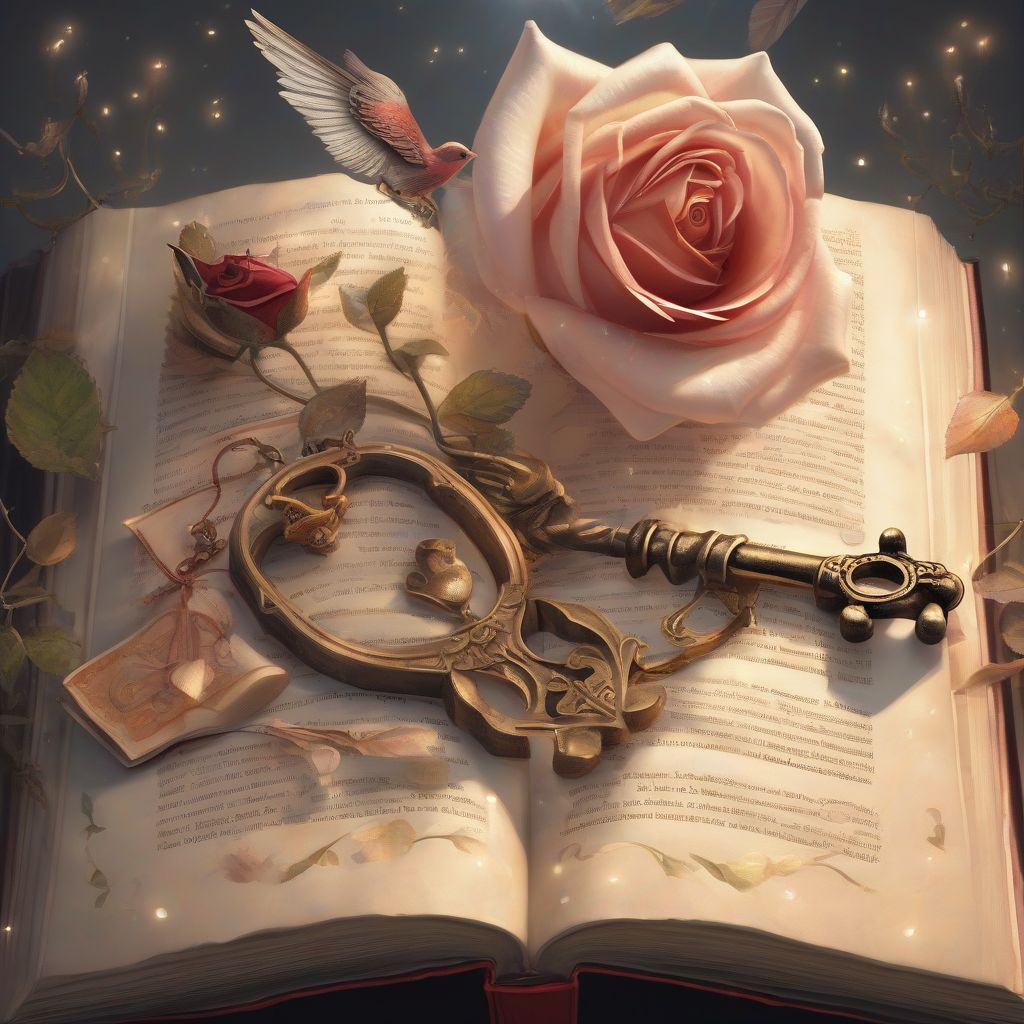Have you ever finished reading a classic novel and felt like there was a deeper layer of meaning you just couldn’t quite grasp? Like the author was speaking in a secret code hidden beneath the surface of the story? You’re not alone! Classic literature is teeming with symbolism, a literary device authors use to convey complex ideas and emotions indirectly through objects, characters, and actions. Learning how to interpret these symbols can unlock a whole new dimension of meaning in your reading experience, making the classics even more rewarding.
Deciphering the Language of Symbols
Think of symbols as literary Easter eggs, waiting to be discovered and understood. They add depth and richness to the text, inviting readers to engage in a kind of literary treasure hunt. But how do you crack the code?
1. Context is Key: Unraveling the Symbolic Web
The first step in interpreting symbolism is to consider the context in which it appears. Just like a word can have multiple meanings depending on the sentence it’s in, a symbol’s significance can change depending on the story’s setting, plot, and characters.
For example:
- A bird: In a story about freedom and escape, a bird might symbolize liberation. However, in a story about a character trapped in grief, the same bird might represent fleeting hope or lost innocence.
Questions to ask yourself:
- What is happening in the story when the symbol appears?
- What are the emotions and motivations of the characters involved?
- How does the symbol connect to the themes the author explores throughout the book?
2. Look for Patterns and Repetition: Unveiling the Author’s Intent
Authors often use symbols repeatedly throughout a work to reinforce their importance. Pay close attention to recurring objects, images, or even colors. These repetitions can point to a larger symbolic meaning.
For example:
- The color green: If a character associated with envy consistently wears green or if green settings appear during moments of betrayal, the author might be using this color to symbolize jealousy.
Questions to ask yourself:
- Does this symbol appear in different forms or contexts?
- Does it appear alongside other recurring symbols?
- Does the symbol’s appearance coincide with significant events or changes in the story?
3. Consider Cultural and Historical Context: Stepping Back in Time
Symbols often carry cultural and historical baggage that can influence their meaning. What might seem like a straightforward object to a modern reader could have held a completely different significance in the past.
For example:
- A rose: In Victorian England, roses were associated with specific meanings based on their color and variety. A red rose might symbolize passionate love, while a white rose might represent purity or innocence.
Questions to ask yourself:
- When and where was the book written?
- What were the prevailing social norms, beliefs, and values of that time period?
- Are there any historical events or cultural movements that might shed light on the symbol’s meaning?
Putting It All Together: Analyzing Symbolism in Action
Let’s look at a famous example from classic literature: the green light in F. Scott Fitzgerald’s “The Great Gatsby.”
- The Symbol: A green light at the end of Daisy Buchanan’s dock, visible from Gatsby’s mansion across the bay.
- The Context: Gatsby, deeply in love with Daisy, stares longingly at the green light, yearning for a reunion with his lost love.
- The Interpretation: The green light becomes a complex symbol representing Gatsby’s unattainable dream of recapturing the past and winning Daisy back. It also embodies broader themes of hope, longing, and the elusive nature of the American Dream.
By paying attention to the context, repetition, and cultural significance, we can decipher the deeper meaning behind this iconic symbol.
Beyond the Surface: Embracing the Power of Symbols
 Decoding Symbolism in Classic Literature
Decoding Symbolism in Classic Literature
Interpreting symbolism in classic literature is like learning a new language. It takes practice, patience, and a willingness to delve beneath the surface of the text. But the rewards are immeasurable.
- Enhanced Understanding: Recognizing and understanding symbolism allows you to grasp the full depth and complexity of the author’s message.
- Increased Enjoyment: Unraveling the layers of meaning hidden within symbols can make your reading experience more engaging and enriching.
- Greater Appreciation for Literature: Recognizing the skillful use of symbolism can deepen your appreciation for the artistry and craft of classic writers.
Remember, there is no single “right” interpretation of a symbol. Be open to different perspectives, engage in thoughtful discussions with other readers, and don’t be afraid to draw your own conclusions. The journey of interpreting symbolism is an individual and rewarding one.
Want to Dive Deeper into the World of Classic Literature?
- Explore our articles on analyzing classic books: Discover effective ways to discuss and dissect the works that have shaped literary history. [link to: https://classicliteraturereviews.com/the-best-ways-to-discuss-and-analyze-classic-books/]
- Unlock the secrets of annotations: Learn how taking notes while you read can illuminate the text and enhance your understanding of symbolism and other literary devices. [link to: https://classicliteraturereviews.com/the-role-of-annotations-in-reading-classic-literature/]
- Uncover the power of themes: Explore how authors weave thematic threads throughout their works, often using symbolism as a key tool. [link to: https://classicliteraturereviews.com/how-to-appreciate-the-themes-in-classic-literature/]
So, the next time you curl up with a classic novel, keep your eyes peeled for those hidden literary gems. You never know what profound meanings you might uncover. Happy reading!
[amazon bestseller=”Classic Literature”]
